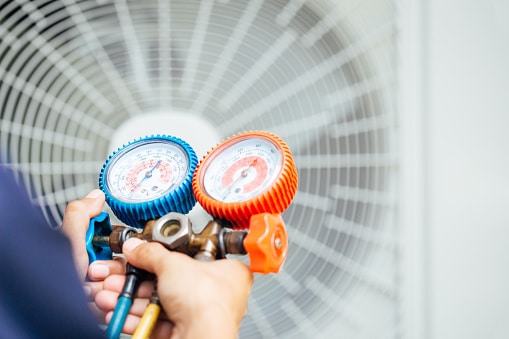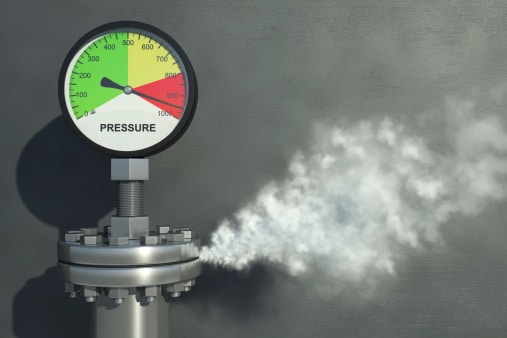what are benefits of various furnaces?
what are the benefits of various furnaces?
Trane furnace:
Trane furnace is one of the most well-known brands in modern furnaces and central air conditioning today. They provide a wide range of heating and cooling choices for your house. Trane is frequently regarded as a high-end furnace brand, alongside Carrier, American Standard, and York HVAC. To receive the best pricing, it is usually a good idea to acquire HVAC unit installation price quotations from at least four pre-screened and licensed HVAC contractors before beginning your job. Trane gas furnace installation prices might range from $2,490 and $6,000 in total. In order to install a Trane XV80 furnace, you need to budget between $2,500 and $4,000 in installation charges. Your overall expenditures will be heavily influenced by the size of the furnace system required for your house as well as the AFUE rating of the new gas furnace.
furnace oil:
Furnace oil is one of the most affordable industrial fuels. It is produced as a byproduct of petroleum refineries. FO (Furnace Oil) is one of the products produced during the CRUD Oil processing, along with other petroleum fuels such as HSD, Petrol, and so on.
It has a calorific value of 10000 cal/gm. The principal consumers of FO are furnaces, which are primarily used for heating or pre-heating massive amounts of metal. This can be held in vertical or horizontal tanks, above ground, or, in rare situations, underground. The size and capacity of these tanks are established in India by the CCOE, which is the fuel storage regulatory authority.
FO is fluid and not appropriate for full combustion when burned directly. Depending on the use, it is pre-heated to 55 degrees Celsius or higher. The flow rises with temperature, which enhances combustion. In the exhaust chimney of the furnace, a water-based scrubber is utilized, which arrests a significant quantity of carbon suite and improves emissions. The entire FO yard is designed in accordance with IS standards, including pre-heating in storage tanks as well as pipes and pumps, a pumping station, level controls, control-panels, and the entire distribution pipeline, taking into account the application, required storage capacity, logistics, available space, and government regulations.
propane furnace:
Propane has several of the same properties as natural gas, such as being clean-burning, having a higher heating capacity in BTUs (British Thermal Units) per cubic foot than natural gas, and providing a consistent supply of fuel with a competitive delivery service. Electric heat via a heat pump system or an electric furnace is another alternative in these places. These solutions are more prevalent in the southern United States, where winters are warmer and heating seasons are shorter or less intense. Furthermore, many people prefer the feel and comfort of gas heating because of the warmer heating output coming from the registers.
Contacting an expert HVAC specialist who can correctly analyze heating demands such as sizing/heating capacity, homeowner comfort, and efficiency preferences, and installation costs is the best approach to acquire an exact cost estimate for a new propane furnace heating system. Our dedicated furnace cost page has further information on the cost of a new furnace. Because of the costs connected with the needed conversion kits and work, the propane furnace price is often slightly higher than the natural gas versions. Skip forward to the section on Converting from Natural Gas to Propane for further information on propane conversion.
waste oil heater:
Industrial waste heaters, also known as waste oil burners and multi-oil heaters, can be installed in workshops, garages, warehouses, factories, and other industrial facilities that generate waste oil. They can burn a broad variety of oil-based fuels, including higher viscosity oils that are incompatible with traditional heaters. During the chilly winter months, you may utilize and recycle the waste oil to keep the area warm and cozy. Engine oil, gearbox oil, vegetable oil, diesel oil, 35-second heating oil, various forms of used oil, and bio-fuels such as rapeseed oil may all be used to fuel waste oil burners.
Waste oil burners are a fantastic choice for utilizing waste oil to heat huge rooms. It allows you to heat the space without incurring fuel costs, which is useful given the changes in how you may use red diesel and rebated fuels. However, burning leftover oil does not produce free heat. Regulation revisions in 2016 make it unlawful to burn waste oil in a small waste oil burner (SWOB) without a permit under Schedule 13A of the Environmental Permitting Regulations 2010 is acquired, which costs for the application and an annual charge. The move came as a result of an amendment to include SWOBs in larger waste incineration laws aimed at reducing air pollution emissions. If you utilize non-waste fuel, you can continue to operate your multi-fuel burner without permission.
new furnace:
Unless you have a heat pump as your HVAC system, you most certainly have a furnace that pumps hot air through your house’s ducts and vents during the winter months. However, if your furnace breaks down, it can be difficult to understand whether it is best to repair or replace it, and how much each alternative costs. The This Old House Reviews team investigated the most common furnace expenses and prepared a guide on how various types of furnaces function, how much they cost, and pricing variables to consider when purchasing a new furnace. After you’ve finished reading this tutorial, use the widget below to get in touch with a competent HVAC contractor near you and obtain an estimate on HVAC repairs or replacement: Here are a few elements that influence furnace prices:
Although the DOE says that the lowest AFUE rating for new furnaces sold is 80 percent, most furnaces have a rating between 83 percent and 95 percent. The lower the average yearly energy expenses, the higher the energy efficiency rating. Furnaces with high AFUE ratings are often more expensive to purchase. High-efficiency gas furnaces, for example, can cost $700-$1,500 more than mid-efficiency models, but they might save you money in the long term by lowering monthly gas payments.
Size: A furnace’s size is measured in British Thermal Units (BTU) to calculate how much room it can heat. Typical furnace sizes range from 40,000 to 120,000 BTU. In general, multiply the entire square footage by 40 to get the BTU for your home, with colder climates requiring somewhat more BTU per square foot. The cost of furnaces and installation rises as the BTU of the unit rises.
Brand: Comparing different brands is an excellent approach to locating the greatest value on a furnace. Goodman, Trane, and Lennox are popular HVAC brands that sell furnaces.
Installation and labour rates vary based on where you live, so receiving estimates from a few local HVAC providers assures you receive the lowest pricing. Furthermore, if you’re still deciding on a furnace type and model, consulting with an HVAC specialist will help you identify which sort of furnace is best for your house.
Tax breaks: Buying an Energy Star-certified product may entitle you to specific tax breaks. Energy Star is a non-profit organization supported by the DOE and EPA that promotes the manufacturing and purchase of high-efficiency goods such as furnaces. Homeowners who purchase an Energy Star-certified furnace with an AFUE rating of 95 percent or above are eligible for a $150 tax credit until December 31, 2021.
wood furnace:
Wood-burning furnaces must be supplied with firewood, which is done manually through a combustion chamber door. A backup heat source, such as a second electric, kerosene, or gas heater, is sometimes included with the device. Some furnaces are marketed as combo systems that have a wood firebox as well as a gas or oil-fueled burner. Additional wood furnaces are another option. Although combination units feature two combustion chambers, they usually share the same blower and ducting. They frequently share the same chimney. Indoor forced air wood furnaces may be linked to a home’s current air heating system and, as previously stated, can also function as a hot water heater. Many companies produce wood-burning furnaces with blowers. The United States Environmental Protection Agency (EPA) began certifying these furnaces in 1990, so seek for this feature while buying. When compared to other types of heating systems, today’s forced air wood-burning furnaces are efficient and may help save money.
Bryant furnace:
Bryant gas furnaces are an excellent choice for new furnace installation or replacement. Bryant is one of the finest home heating units and is made by the same business that manufactures other top HVAC furnace brands like Carrier, Payne, and HEIL. You receive a high-quality home heating device when you install a new Bryant central air conditioner or furnace. Bryant is less expensive than some of the other furnace manufacturers on the market today, making it an excellent HVAC brand to consider. A Bryant gas furnace costs the average homeowner between $2,485 and $4,368. If you wish to install a mid-tier Bryant Preferred 912S series furnace with up to 92.1 percent AFUE energy efficiency, you can expect to pay roughly $1,694 for the replacement furnace unit alone, and $3,765 for new furnace installation and labour charges.




